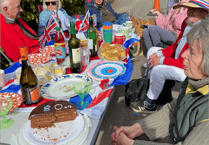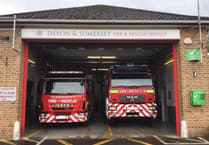THE future of a Williton-based museum housing the world's largest collection of Bakelite objects is under threat after fire officers deemed an escape route to be too narrow for Britain's expanding waistlines.
Patrick Cook, who runs the unique museum in the Grade Two listed Orchard Mill, was told that a roof hatch on the upper level of the eight display room attraction was inadequate as people were bigger than in the past.
He has now been handed a 13-page dossier of fire safety recommendations and given six months to comply - or face closure.
But Mr Cook estimates that the raft of new measures demanded by the Devon and Somerset Fire and Rescue Service will cost around £30,000.
And although he is still negotiating to try and come up with acceptable and less costly alternatives, he is launching a fundraising appeal and trying to raise awareness of his plight in a bid to keep the museum open.
The problems began last May when an off-duty fire officer visited the museum and later raised a number of concerns about the 250-year-old building with his colleagues.
An official visit by a fire officer the next day resulted in the museum being closed down for a week whilst the electrics were checked.
But after months of discussions, 60-year-old Mr Cook, who has been collecting Bakelite - the world's first synthetic plastic - for more than 40 years, has been left pondering his future.
The recommendations to improve safety at the museum include the need for a second internal stairway, an external stairway, more signs and a suggestion that a member of staff or volunteer should be present on each floor.
"This is a wonderful historic building with lots of stairs and uneven floors and the suggestion that we should level the surfaces, change doorways and windows and have a proliferation of signs would be entirely out of keeping with the spirit of the property," said Mr Cook.
"I am, of course, prepared to implement some changes, although I am still working with the fire officers to come up with alternatives.
"But I think there is a wider issue here about the increasing patronisation of the public - people do want to take a few chances in life."
The museum has welcomed an estimated 150,000 people through its doors since Mr Cook began putting some of the 20,000 objects on display 18 years ago.
He said the current lay-out of the mill meant that visitors largely self-regulated their tour of the building.
"People tend to make a judgement as to whether they can get up the stairs or not, so their safety and whether they would be able to get out of the building if a fire broke out is not compromised.
"We don't have huge numbers of people visiting at the same time - even when we have coach parties, we always limit the numbers in each room to just five."
The museum has been run largely as a labour of love by Mr Cook, who says the venture has certainly not made him rich.
The mill, which is also his home, is leased from the Wyndham Estate and Mr Cook hopes to discuss the fire safety issues with its representatives shortly.
He is considering setting up a 'Friends of the Museum' organisation and is looking at a range of fundraising ideas.
"I certainly don't want to close the museum but I don't have the money to make all these changes," he said.
"I just want to raise awareness of my plight and hope that people will consider helping to resolve it."
A fire service spokesman said the authority had been working with the owner of the private collection at the museum to find a workable solution for the listed property, whilst ensuring it conformed to the fire safety requirements laid out in the Regulatory Reform (Fire Safety) Order 2005.
"Wherever possible, we work with local businesses and organisations as we are aware of the impact that regulation can have on the economic growth and prosperity of an area.
"However, our overriding priority is the safety of the public and workforce in buildings that they have access to.
"The fire legislation that we enforce is very much risk assessment based and we work with the business to find a solution that achieves a safe premises while being sympathetic with the existing building and to support this approach we will always consider alternative solutions that are suggested."




